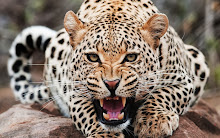 Shrek the Third DVD has finally been released (release date Monday 26th November 2007) and here is my analysis of the films DVD cover which from looking at gives away a lot of hints about the film and its themes:
Shrek the Third DVD has finally been released (release date Monday 26th November 2007) and here is my analysis of the films DVD cover which from looking at gives away a lot of hints about the film and its themes:· The cover shows all the main characters involved within the film; Shrek, Princess Fiona, Donkey, Puss in Boots, Merlin, Pinocchio, Gingy, Prince Charming, ogre babies.
Media Language
1. The image of Shrek and Fiona wearing crowns connote the theme of royalty, kingdom, king and queen. This theme is further reinforced by the red curtains and the header at the top in the shape of a castle.
2. Princesses Fiona’s pose suggests that she’s ready to battle. This demonstrates female power within the film.
3. Baby ogre’s on the DVD cover suggests the themes of pregnancy, parenthood, father, mother, looking after a baby
4. The theme of magic and fantasy is also illustrated by Merlin the Wizard and the spell dust floating around the cover.
5. Vladimir Propp’s Good v Evil is also evident on the cover. The image of Prince Charming on the bottom left of the cover being pushed down by Pinocchio with Charmings facial expression suggests that Prince Charming is the villain of the film, whereas Shrek and all the other characters are seen and are smiling. Prince Charming is the disequilibrium of the film.
6. The font of the film suggests that the film is aimed at a young audiences kids, however as we know Shrek is unique in that it reaches all audiences from “eight year olds to the thirty eight year olds” (Justin Timberlake aka Artie)
7. The variety of colour used on the cover illustrates that the film is fun and lively.
8. “The Best Shrek Yet” illustrates that this film is successful and even better that the previous films. This is also used to persuade on the onlooker to purchase the DVD.
Institution- DreamWorks Animation SKG
Genre- Animation; shown by the mise-en-scene (characters, font etc.)
Representation-
1. Princess Fiona- strong, active role and posed as though she’s ready for action. However by Shrek being in front of Fiona and being taller portrays the patriarchal society as its still the male character who drives the film forward.
2. Shrek- Shrek wearing the crown connotes that Shrek is the king of the kingdom of ‘Far Far Away’.
3. Donkey- Donkey’s big grin suggests he provides the comedy and laughter to the film
4. Puss in Boots- Puss in Boots is posed as though he is “ready to lay my life on the line” (Puss in Boots, line from Shrek 2).
5. Prince Charming- The villain of the film contrasts the stereotypes of a villain. Instead of being ugly or scary, he looks as though “he has a face that looks like it was carved by angels”’. (Line from Shrek 2). Also his facial expression further hints that he is the villain of the film
6. Ogre babies- Hard to looking after, cute, curious.
Audience
1. Kids. This is illustrated by the mise-en-scene
2. Merlin’s magic and the theme of fantasy further reinforce this.
Ideologies and Values
1. The image of The ogre baby on the left is leaving the cover and going off suggesting the babies wander off and parents have to keep an eye on their children at all times.
2. The image of the baby at the bottom center of the cover has a look of curiosity on its face. Again this illustrates that looking after a baby can being hard and stressful as babies are curious therefore they can easily get themselves into danger.
Narrative- Vladimir Propp’s Good v Evil is also evident on the cover. The image of Prince Charming on the bottom left of the cover being pushed down by Pinocchio with Charmings facial expression suggests that Prince Charming is the villain of the film, whereas Shrek and all the other characters are seen and are smiling. Prince Charming is the disequilibrium of the film.






